Armstrong test-pilots a microlight..
Discussion
Idly reading about Neil Armstrong on Wiki this struck me as odd...
'As a research pilot, Armstrong served as project pilot on the F-100 Super Sabre A and C variants, F-101 Voodoo, and the Lockheed F-104A Starfighter. He also flew the Bell X-1B, Bell X-5, North American X-15, F-105 Thunderchief, F-106 Delta Dart, B-47 Stratojet, KC-135 Stratotanker, and was one of eight elite pilots involved in the paraglider research vehicle program (Paresev).'
Wow, I thought, this 'paresev' thing must be really awesome. What could be more exciting and dangerous than that lot? So I clicked the link...
https://en.wikipedia.org/wiki/NASA_Paresev
I was expecting a bit more than a microlight!!
'As a research pilot, Armstrong served as project pilot on the F-100 Super Sabre A and C variants, F-101 Voodoo, and the Lockheed F-104A Starfighter. He also flew the Bell X-1B, Bell X-5, North American X-15, F-105 Thunderchief, F-106 Delta Dart, B-47 Stratojet, KC-135 Stratotanker, and was one of eight elite pilots involved in the paraglider research vehicle program (Paresev).'
Wow, I thought, this 'paresev' thing must be really awesome. What could be more exciting and dangerous than that lot? So I clicked the link...
https://en.wikipedia.org/wiki/NASA_Paresev
I was expecting a bit more than a microlight!!
Simpo Two said:
I'm sure it was the first, but it seems the realms of a stuntman/thrill-seeker rather than arguably the best test pilot in the business. It would have been a tragic loss if he'd been killed flying a motorised kite... 'Eight elite pilots' makes it sound in the same league as Apollo!
No, not some fun and games project at all but directly linked to the Gemini programme and maned spaceflight.The machine was actually designed by Armstrong and Milt Thompson (both X-15 pilots) to test the principle of the Rogallo wing.
NASA intended to land Gemini capsules on land using a wing shaped parachute designed by Francis Rogallo. Recovering capsules from the ocean was a complex and expensive business so giving the capsule some sort of steerable parachute system and a set of landing skids would allow it to land like a more conventional aircraft.
As well as NASA, the USAF wanted to use Gemini capsules as part of their Manned Orbiting Laboratory (MOL) project and they also felt that recovering the capsules to Edwards Air Force Base or White Sands would make far more sense than having to recover them from the Pacific or Atlantic after every mission.
In the end, the project was canned - chiefly because they couldn't work out a safe and consistent method to ensure that the para-wing would unfurl correctly.
However, the Rogallo wing did not disappear as it became the basis of the original hang gliders and micro light aircraft that emerged as recreational craft in the early 1970s.
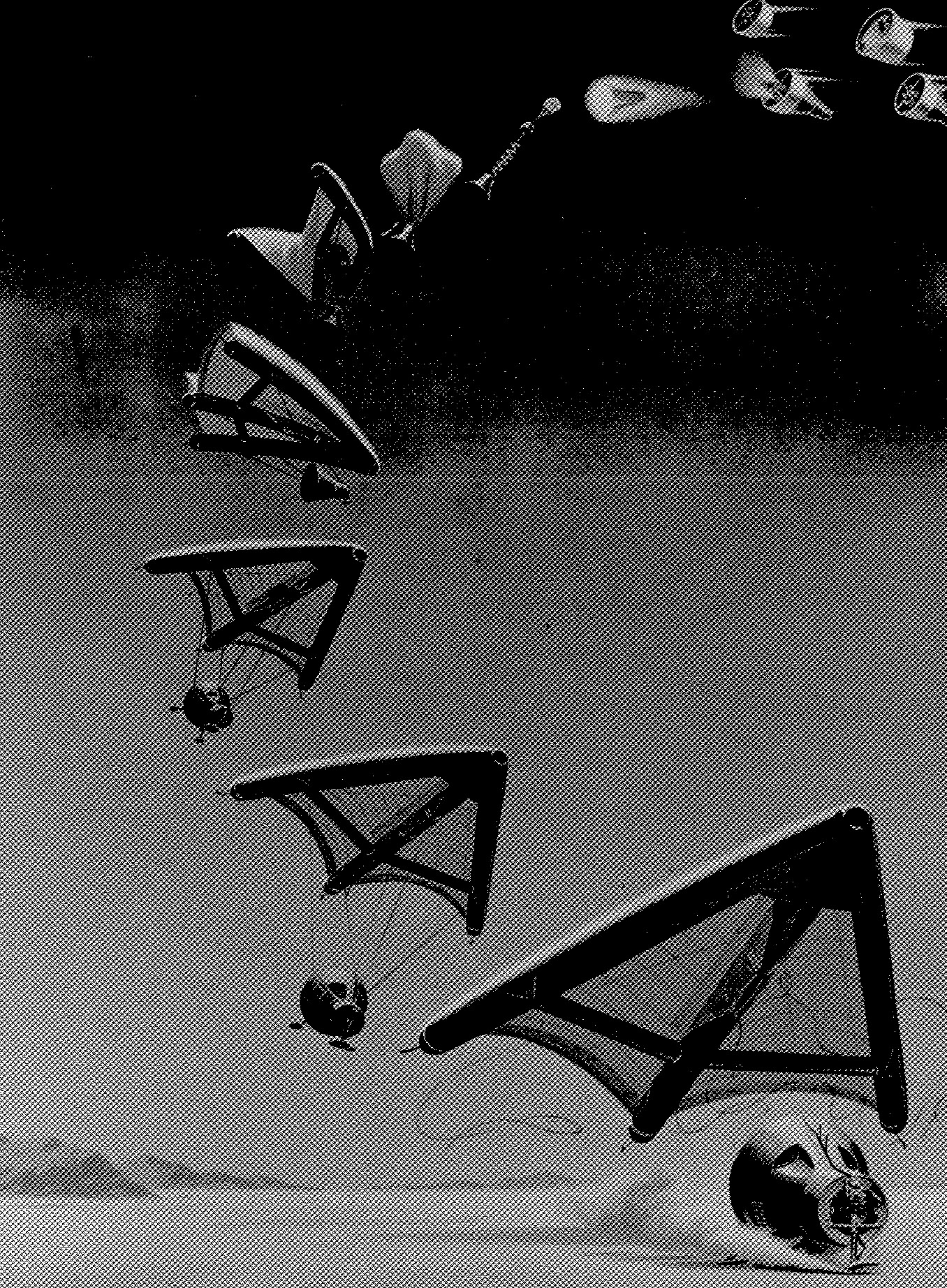
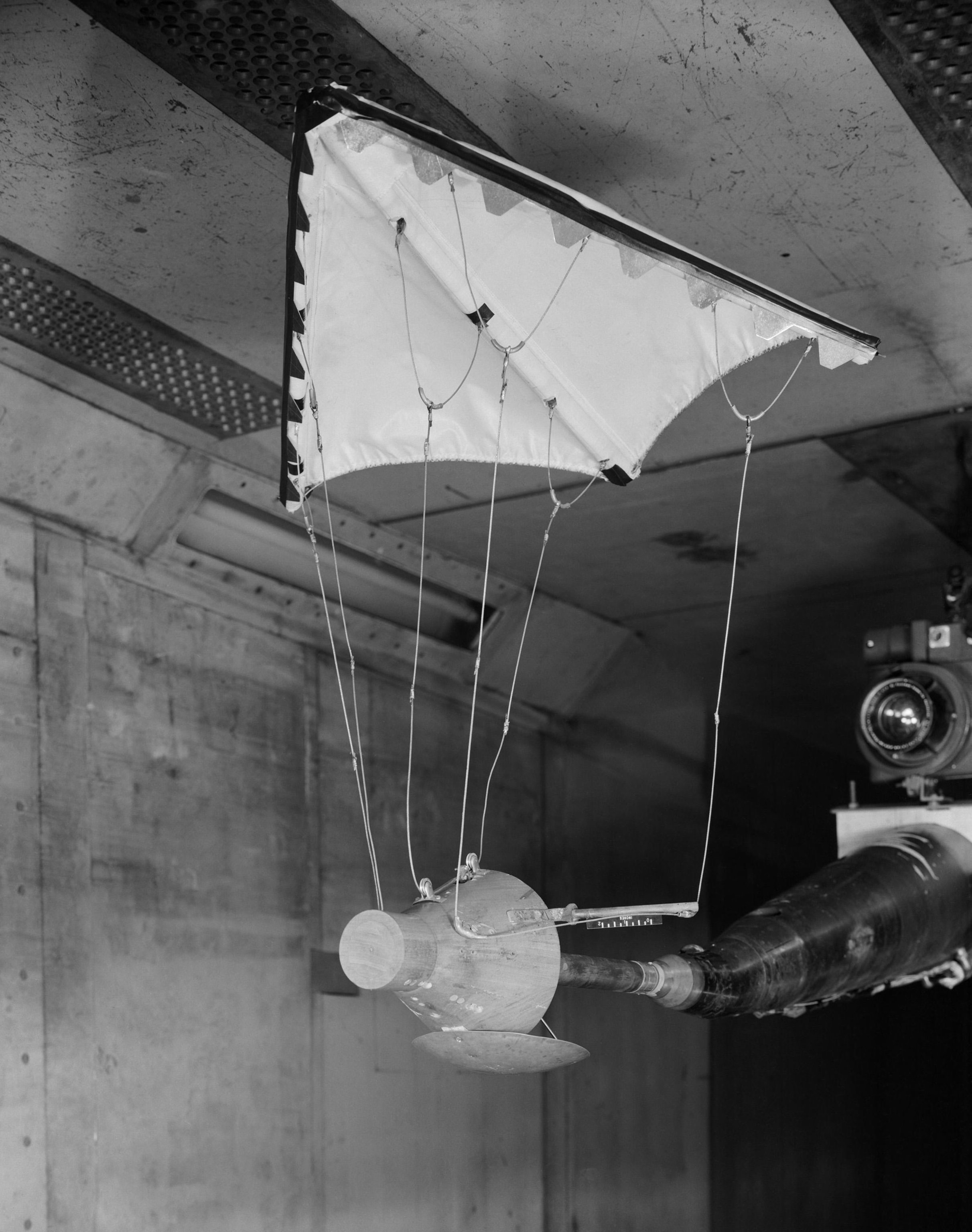
Just to add, even though the Gemini spacecraft never did use a Rogallo parachute to land, the suspension points designed for the Gemini remained the same even when using a conventional parachute. Unlike Mercury, Apollo, Soyuz and future space capsule which use a single point suspension system, the Gemini had a twin point suspension system so that the capsule landed horizontally rather than on its base. This was designed to facilitate glide landings under the Rogallo wing.
It was retained for normal parachute operations, although it was less than ideal as impact with the water almost always insured a dramatic nose pitch down when it struck.
Mercury
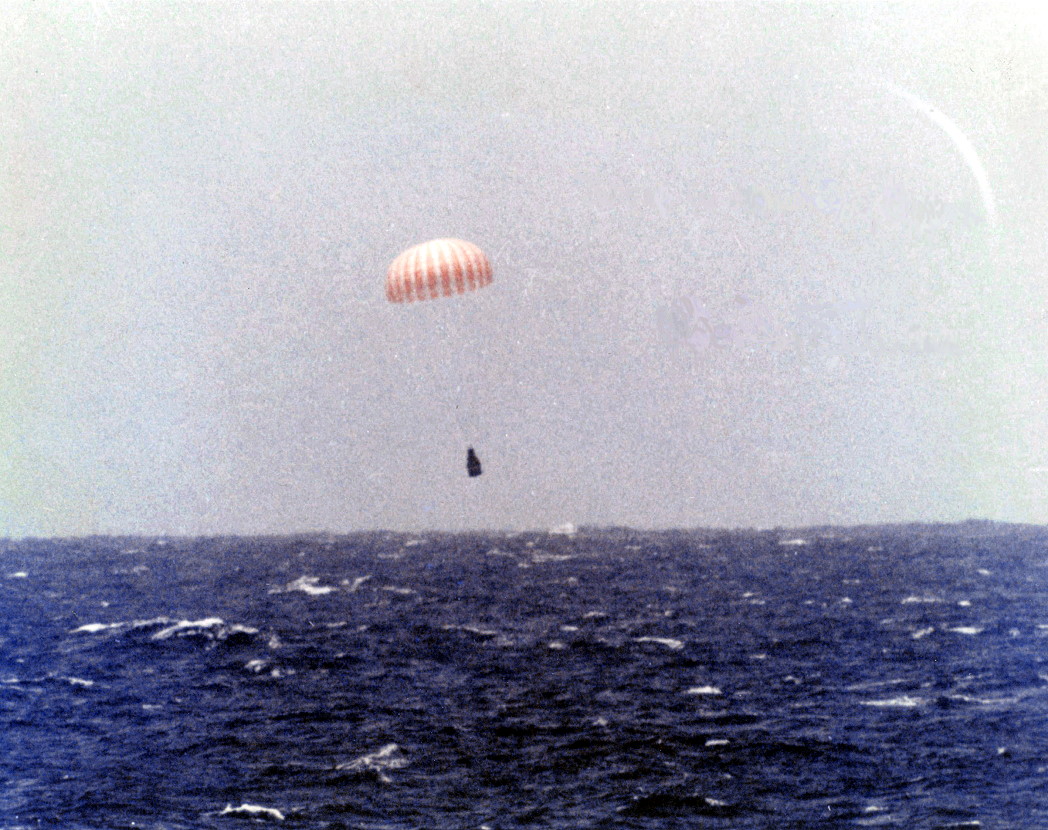
Apollo
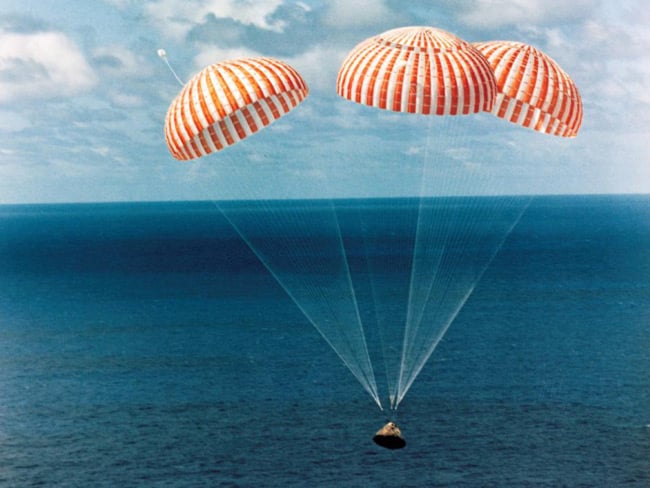

Gemini
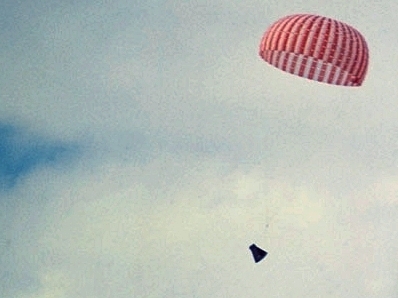
It was retained for normal parachute operations, although it was less than ideal as impact with the water almost always insured a dramatic nose pitch down when it struck.
Mercury

Apollo


Gemini

Mercury and Gemini missions normally splashed down in the Atlantic - north of Cuba and the Dominican Republic. This was because that was where the recovery forces were deployed in case of an abort during ascent from Cape Canaveral.
It made sense to have them land there at the end of the mission.
Smaller forces were kept on stand-by in the Pacific and Indian Oceans just in case they had to come down in a different location.
Two Gemini missions splashed down in the Pacific. Gemini 7 was a 14 day mission (the longest in the Gemini programme) and orbital mechanics coupled with the timing of the return meant that the Pacific was a better option on that occasion.
Gemini 8 was an emergency re-entry and splashdown. If the mission had proceeded normally, it would have landed in the Atlantic but because they had to cut the mission short, they ended up coming down in the Pacific.
As far as Apollos are concerned, earth orbital missions (Apollos 7 and 9) splashed down in the Atlantic. Lunar missions splashed down in the Pacific. Apollos returning from the moon entered the earth's atmosphere directly and, again, orbital mechanics, lighting requirements and the timing of the re-entries made the Pacific the correct target zone.
The Skylab splashdowns and the Apollo-Soyuz splashdown were all in the Pacific.
Accuracy of splashdowns varied enormously in the Mercury and early Gemini days. As Gemini progressed, accuracy improved dramatically. By the time of the Apollo mission, even the lunar return re-entries were coming down close (in some cases - a bit too close) to the recovery carriers.
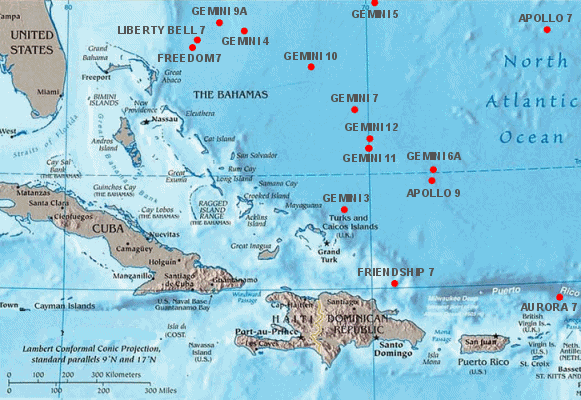

https://en.wikipedia.org/wiki/Splashdown
It made sense to have them land there at the end of the mission.
Smaller forces were kept on stand-by in the Pacific and Indian Oceans just in case they had to come down in a different location.
Two Gemini missions splashed down in the Pacific. Gemini 7 was a 14 day mission (the longest in the Gemini programme) and orbital mechanics coupled with the timing of the return meant that the Pacific was a better option on that occasion.
Gemini 8 was an emergency re-entry and splashdown. If the mission had proceeded normally, it would have landed in the Atlantic but because they had to cut the mission short, they ended up coming down in the Pacific.
As far as Apollos are concerned, earth orbital missions (Apollos 7 and 9) splashed down in the Atlantic. Lunar missions splashed down in the Pacific. Apollos returning from the moon entered the earth's atmosphere directly and, again, orbital mechanics, lighting requirements and the timing of the re-entries made the Pacific the correct target zone.
The Skylab splashdowns and the Apollo-Soyuz splashdown were all in the Pacific.
Accuracy of splashdowns varied enormously in the Mercury and early Gemini days. As Gemini progressed, accuracy improved dramatically. By the time of the Apollo mission, even the lunar return re-entries were coming down close (in some cases - a bit too close) to the recovery carriers.


https://en.wikipedia.org/wiki/Splashdown
saw this the other day and thought "i bet that's right up eric's street"
https://www.createspace.com/6503097
https://www.createspace.com/6503097
JuniorD said:
Fantastic thank you Eric!
I don't know why but I find space flight and navigation mind boggling and something I've never got to grips with. Even the thoughts of shuttle glide landings with no go-around option freaks me out.
Actually, as you can see from the list I posted above, even the fairly un-aerodynamic Apollo capsules were pretty much hitting a specific target spot on - and that was after coming into the earth's atmosphere directly at 25,000 mph.I don't know why but I find space flight and navigation mind boggling and something I've never got to grips with. Even the thoughts of shuttle glide landings with no go-around option freaks me out.
With the Shuttle "all" they had to do was get the Orbiter within a mile or so of the end of the runway with sufficient height and speed to enable a proper glide approach to the runway. They did that by careful "energy management" and the use of what they called the "heading alignment circle", which was a circle into which they could enter at almost any angle and use it to emerge on the correct approach heading.
The X-15 programme had used a similar technique so they were pretty confident it would work. And it did - every time.
Eric Mc said:
JuniorD said:
Fantastic thank you Eric!
I don't know why but I find space flight and navigation mind boggling and something I've never got to grips with. Even the thoughts of shuttle glide landings with no go-around option freaks me out.
Actually, as you can see from the list I posted above, even the fairly un-aerodynamic Apollo capsules were pretty much hitting a specific target spot on - and that was after coming into the earth's atmosphere directly at 25,000 mph.I don't know why but I find space flight and navigation mind boggling and something I've never got to grips with. Even the thoughts of shuttle glide landings with no go-around option freaks me out.
With the Shuttle "all" they had to do was get the Orbiter within a mile or so of the end of the runway with sufficient height and speed to enable a proper glide approach to the runway. They did that by careful "energy management" and the use of what they called the "heading alignment circle", which was a circle into which they could enter at almost any angle and use it to emerge on the correct approach heading.
The X-15 programme had used a similar technique so they were pretty confident it would work. And it did - every time.
I've seen some of this stuff at Wright-Patterson AFB Museum and superficially it all looks so crude and rudimentary I do wonder what percentage of every successful flight and mission was down to pure luck rather than judgement.
It may look crude but it was as advanced as was feasible at the time. During the glory days of Mercury, Gemini and Apollo, NASA did take risks that they would not do today - for the obvious reason that they were racing the Soviets to the moon.
However, they did their level best to try and engineer into their designs as much redundancy and back up as they possibly could - and where redundancy wasn't possible, try to use the simplest and most reliable solution possible.
The other technique they used to to simulate the hell out of every possible scenario in advance.
It was this approach which allowed them to work their way around the multiple issues that arose on nearly every mission they flew.
I'm sure luck did come into play on a couple of occasions - but hard work and practice made sure that in most cases, glitches were overcome because of the thought and hours that had been put in, rather than just luck.
However, they did their level best to try and engineer into their designs as much redundancy and back up as they possibly could - and where redundancy wasn't possible, try to use the simplest and most reliable solution possible.
The other technique they used to to simulate the hell out of every possible scenario in advance.
It was this approach which allowed them to work their way around the multiple issues that arose on nearly every mission they flew.
I'm sure luck did come into play on a couple of occasions - but hard work and practice made sure that in most cases, glitches were overcome because of the thought and hours that had been put in, rather than just luck.
The whole lifting body program was just a thinly disguised excuse for the test pilots to run a muscle car at NASA's expense...
https://www.nasa.gov/centers/dryden/multimedia/ima...
I'm not being entirely serious with this post
https://www.nasa.gov/centers/dryden/multimedia/ima...
I'm not being entirely serious with this post
Gassing Station | Boats, Planes & Trains | Top of Page | What's New | My Stuff




 .
.